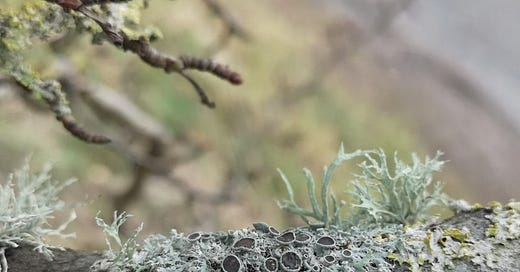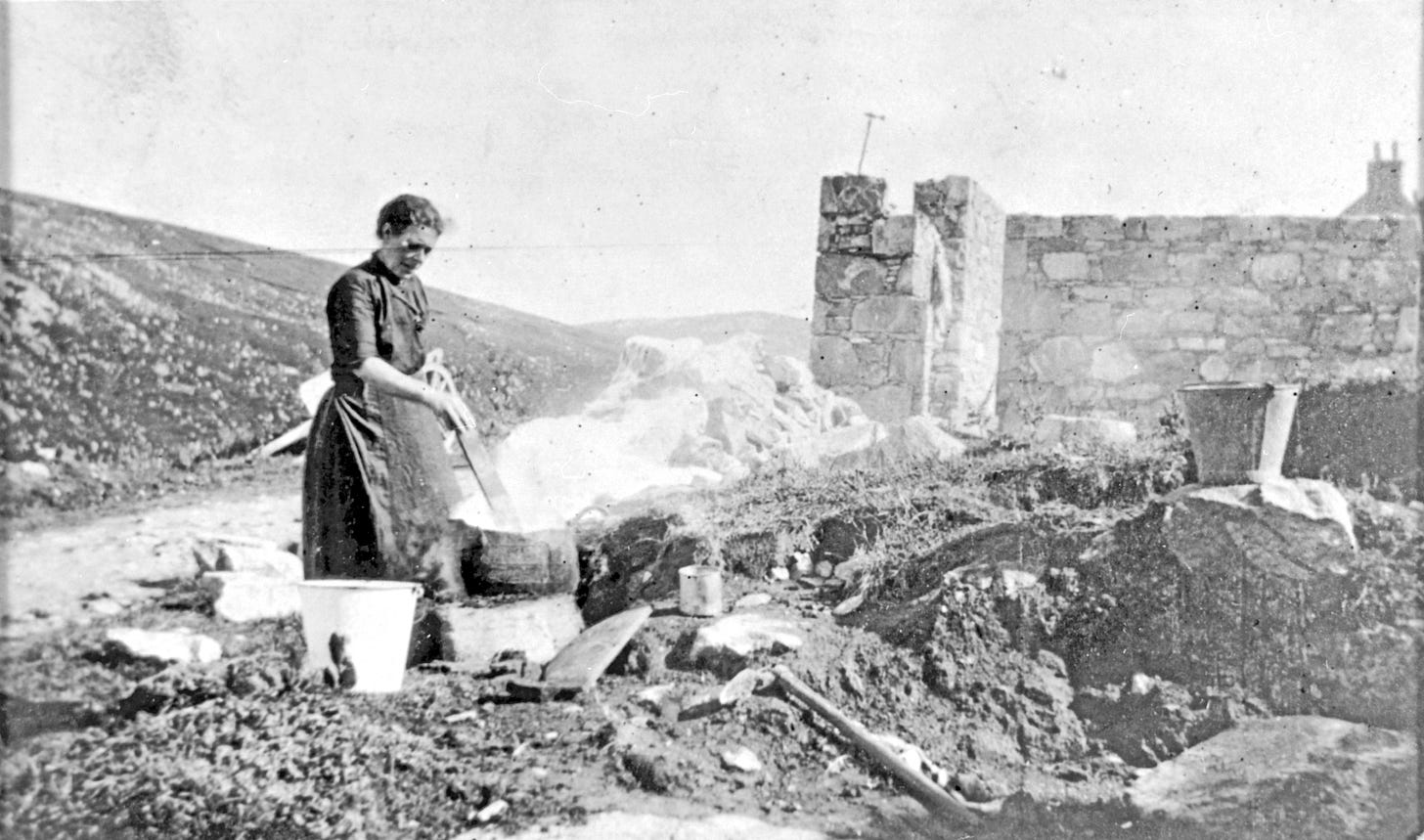Winter is not a time of plenty for wildlife. The trees and other creatures who can are hibernating, squirrels are making use of their stashes, only coming out of their dreys for a quick snack. We ourselves are huddled by the fire as the rain pours outside.
You’d be forgiven for thinking there's not much reason to venture outside as our fellow creatures take a break. But winter can be a time of abundance if you’re interested in dyeing with natural materials.
There is an organism sitting in plain sight (particularly if you live in the Highlands) that for centuries has been used to colour cloth in Scotland. And it’s just waiting to be collected after a winter storm, the best part is that it can be stored and kept all year round!
What is this amazing substance?
Lichen.
Humans across the world have used lichens for centuries in dyeing. The Romans produced a purple dye from lichens for their togas. In Scotland our traditional kilts were dyed from lichen extracts, while native Americans used lichen dyes for colour in their rugs.
As late as the 1950s communities in Western Britain and Ireland produced the dye known as crottle from the leafy lichens. There lichens were scraped off the rocks using metal hoops, spoons and seashells, and there were significant cultural implications associated with these dyes.
Clothing dyed with crottle lichen dyes (those that yield red-browns in boiling water) has some interesting traditions attached to it. It seems that, as the lichen is associated with the earth, it was considered a good idea to wear socks dyed with crottle if undertaking a long journey on foot. However, if crottle dyed garments were worn by sailors, it was thought that they might bring bad luck, or if the sailor / fisherman drowned, his body would never be recovered — anyone wearing crottle dyed garment sinks like a stone and:
“What comes from the rocks returns to the rocks.”
D. MacIntyre, 1999; The role of Scottish native plants in natural dyeing and textiles.
Later, it was found that by steeping certain species in ammonia we could also produce beautiful reds and purples from common Scottish Lichens. This led to a rather large industry of collecting lichen and was a big part of the Harris Tweed industry. In the present day it’s not feasible to collect large quantities of lichen from rocks and trees, these are slow growing organisms, some of which are now rather rare. However our winter storms blow lichen from trees on to the ground where it can be collected.
Lichens may be particularly good for dyeing because they produce roughly 700 different chemicals on their surface, and their ability to become inactive when dried, allows them to be stored and makes them a year round option for dyeing
But there are also thousands of species of Lichen in Scotland…where should you even start?
Keep an eye out - In Part 2, I will outline a few common species that can be collected and used to dye wool from home.
Marcia O'Hara is High Life Highland's dedicated Countryside Ranger for Easter Ross and South East Sutherland. She infuses her love for nature into every aspect of her work, from community clean-ups to guided events and workshops. With an academic foundation in Environmental Biology, Marcia excels in bringing fresh perspectives to her sessions, making science come alive in community learning. Known for her ability to engage and inspire, Marcia has a special interest in woodland botanics, including fungi, lichen, and trees. Her unique approach and deep connection to nature have made her an invaluable asset in preserving the natural beauty of the region she covers.
Interested in Traditional Dyes? Michelle Melville, High Life Highland Heritage Ranger will be talking about the traditions of Scottish Dyes in her upcoming talk:
Scotland's colourful legacy: Traditional plant dyes and associated tales.
Join us for an online event on Thu Dec 12 2024 at 19:30 GMT to explore the rich history of traditional plant dyes in Scotland. Learn from our Heritage Ranger about the vibrant hues created from natural sources and hear fascinating tales associated with these ancient practices. Discover the cultural significance of these dyes and how they have been used throughout history. Don't miss this unique opportunity to delve into Scotland's colourful past!








Absolutely fascinating… I have always loved lichens. When I worked as a teacher I sometimes would look at them under the microscope with students- there are all sorts of nematodes, mites and little insects living among them! Very interesting to learn about the making of dyes from them…
Lichens are fascinating and beautiful organisms, but so many of them are very difficult to identify to species level. Your first photo is amazing, what's the main species of lichen on that branch?